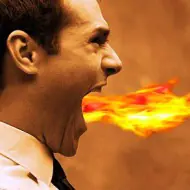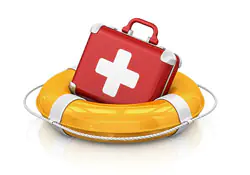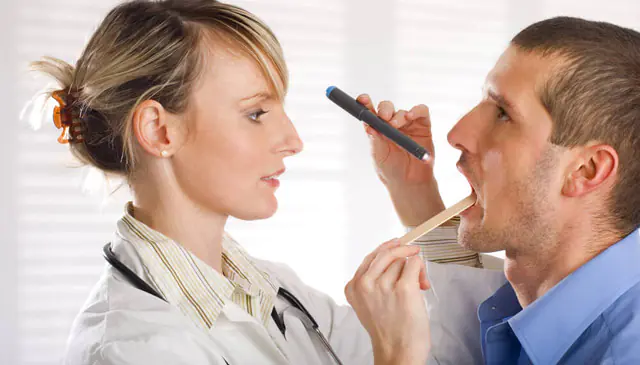The drug does not cause burns, as it is used in non-toxic concentrations. When used correctly, it is impossible to burn your throat with HEXORAL ®. A burning sensation may be a sign of individual intolerance. In this case, it is recommended to immediately consult your doctor.
Instructions for HEXORAL ® AEROSOL
HEXORAL ® – No. 1 for sore throat*
1,*. Hexoral ® is No. 1 in terms of prescriptions. Data provided by Ipsos Comcon LLC, commissioned by Johnson & Johnson LLC, based on the PrIndex™ Prescription Monitoring study conducted in April 2016.
Johnson & Johnson LLC, Russia, 2018. This site is owned by Johnson & Johnson LLC, which is solely responsible for its content.
The site is aimed at individuals and legal entities from Russia.
Last updated: November 14, 2018
Registration numbers IDs:
P N014010/01 dated 08/10/2010, P N014010/02 dated 08/06/2010, LSR-002626/07 03/14/2008, P N015976/01 dated 08/12/2009, LSR-004122/09 dated 05/26/2009
The information posted on the site is for reference purposes only and cannot be considered medical advice or replace it.
For more detailed information, we recommend that you contact a specialist.
By clicking the “Share on social networks” button, I confirm that I am expressing my own opinion about the HEXORAL ® product.
My opinion is based solely on my own assessment of this product, I confirm that it is not motivated by any benefits or preferences from the manufacturer / importer / sellers of the product.
THERE ARE CONTRAINDICATIONS FOR USE. YOU MUST READ THE INSTRUCTIONS.
Treat with an antiseptic like Miramistin, exclude foods that irritate the throat: too hot or cold foods and drinks, spicy, sour, too hard foods, alcohol..
If you are not satisfied with the answer or there is none, then try using the search on the site and find other answers in the Health category

A throat burn is an injury to the mucous membrane of the throat caused by the destructive effects of chemical or thermal factors. The main cause of the pathology is simple carelessness. Burns occur accidentally in domestic or industrial conditions, as well as intentionally - during a suicide attempt. Industrial burns occur when inhaling vapors of chemical compounds while working without personal protective equipment, for example, without a respirator. Children are most susceptible to throat burns as a result of insufficient control over them, but they often occur in adults.
A burn of the larynx is a lesion of the epithelium, and in severe cases of deep-lying tissues: muscles, ligaments, cartilage. The consequences of such pathologies are very dangerous for humans.
Chemical or thermal damage to the larynx causes immediate pain and requires immediate medical attention and adequate correction.
Minor burns may not be treated, since the epithelium of the mucous membrane of the upper respiratory tract has the ability to quickly repair itself. Severe injuries can lead to disability and even death.
Depending on the type of etiopathogenetic factor involved, throat burns are classified into chemical and thermal. Symptoms and methods of providing first aid for these ailments are somewhat different.
Etiology
The causes of burns to the throat mucosa are divided into two large groups: chemical and thermal.

Chemical burn to the throat - a serious problem, the main cause of which in domestic conditions is alcohol or certain medications. Treatment of tonsillitis with iodine solution or alcohol tinctures can lead to a chemical burn of the throat mucosa. Iodine is an aggressive chemical that can cause serious tissue burns. "Lugol", "Yox" - medicines prepared on the basis of iodine. The use of these drugs in the presence of severe pharyngitis or tonsillitis can result in a burn of the mucous membrane. Specific substances that cause chemical burns include: citric acid, vinegar, ammonia, soda, acetone, acids and alkalis, ethyl alcohol. A burn of the larynx, accompanied by pain and burning, can be caused by the reflux of gastric juice into the esophagus during gastritis with high acidity. Acids cause coagulation of muscle proteins and the formation of a dry scab, which is an obstacle to further penetration of the chemical. Alkalis have a more aggressive effect on the laryngeal mucosa. They dissolve proteins. In this case, wet necrosis develops, allowing chemicals to penetrate inside.- Thermal burn of the larynx occurs when consuming hot food and boiling water, as well as when inhaling hot air, for example, during fires. Many burn blisters appear on the oral mucosa. At the same time, the victim develops vision problems, general health worsens, and the functioning of internal organs is disrupted. This is a milder form of pathology compared to chemical damage to the laryngeal mucosa, which is associated with short-term exposure to hot substances and their rapid neutralization with cool water.
Symptoms
A burn to the throat is manifested by intense and excruciating pain when swallowing, burning and painful sensations in the nasopharynx, profuse salivation, dyspeptic disorders, fever, swelling and redness of the mucous membrane, the appearance of blisters and areas of whitening on it, enlarged and painful lymph nodes, changes in the timbre of the voice, cough , shortness of breath, rapid heartbeat.

Burn injuries often spread from the larynx to the lower parts of the respiratory system: the trachea and bronchi. At the same time, the general condition of the patients worsens significantly. Trauma to the esophagus is manifested by excruciating pain in the chest and epigastrium, prolonged hiccups, belching and heartburn. Simultaneous irritation of a large number of nerve endings leads to serious consequences - reflex cessation of breathing. In cases of severe burns, toxic shock occurs.
A local burn of the pharynx is manifested by internal discomfort and goes away on its own within a week. More serious injuries require consultation with a doctor and comprehensive treatment.
- Thermal burn of the larynx occurs when drinking hot liquid, food or inhaling hot air. A burn from boiling water cannot be isolated. It usually spreads to the mucous membrane of the mouth, esophagus, and trachea. The symptoms of the pathology develop rapidly and cause a lot of trouble. The victim experiences sharp and excruciating pain, hypersalivation, reflex vomiting and other characteristic clinical signs.
- Chemical burns are less common than thermal burns. but it is much more severe and less responsive to therapy. Throat burns from various chemicals are very dangerous for humans. Clinically, they manifest themselves with the same symptoms as thermal ones. When a chemical enters the respiratory tract, dysphagia and dysphonia occur, and respiratory functions are disrupted.
Based on the severity and severity of tissue damage, there are three types of throat burns:
- 1st degree burn It is characterized by damage to the surface epithelium, on which whitened areas appear, and after 2-3 days they begin to separate. Patients feel a burning sensation and slight pain in the throat.
- 2nd degree burn characterized by more serious tissue damage and the formation of blisters with gray films on the mucosa. By the end of the second week, the plaque separates, the blisters burst, and erosions appear in their place - sores. They heal with the formation of small superficial scars that do not cause organ dysfunction. Intoxication is added to the pain syndrome.
- 3rd degree burn manifested by severe intoxication of the body and abundant purulent sputum caused by the death of inflamed tissues. Scabs appear on the mucous membrane, which over time are rejected to form large and deep bleeding ulcers. After they heal, a scar remains, disrupting the swallowing process.
Second- and third-degree throat burns are dangerous injuries. In the absence of timely medical care, the victim may die due to suffocation or intoxication.
Urgent Care
The prognosis of the disease depends on the quality and speed of emergency care. First, it is necessary to establish the damage factor by inspecting the scene of the incident and interviewing witnesses. Then they move on to inspecting the affected area. With acid burns, there is a dry scab on the mucous membrane, and with alkaline burns, there is a wet, jelly-like scab.

First aid for thermal burns involves drinking cool water, crushed ice, or gargling with anesthetic solutions.. Cold water will stop the burn from spreading into the tissue. You need to drink it in small sips, holding the water longer near the damaged area. Pieces of ice must be dissolved in the mouth. To reduce pain, you can take a solution of novocaine or lidocaine.- In case of a chemical burn, first aid is aimed at neutralizing acids and alkalis that have entered the body. For acid burns, use a solution of soda, and for alkaline burns, use a solution of citric or acetic acid. The patient should rinse the stomach, give a glass of milk and a little vegetable oil, and then call an ambulance.
To alleviate the patient’s condition, it is necessary to ensure an influx of fresh air, maintain a quiet regime, and exclude from the diet foods that irritate the affected mucous membrane and interfere with regeneration.
Treatment
It is necessary to treat 2nd and 3rd degree throat burns in a hospital setting. First degree burns are treated at home under medical supervision.
In the hospital, patients are prescribed the following groups of drugs:
- Painkillers – “Lidocaine”, “Trimecaine”, “Analgin”, painkillers pastes, narcotic analgesics “Fentanyl”, “Naltrexone”, “Promedol”.
- Sedatives – “Relanium”, “Persen”, “Valoserdin”, “Afobazol”.
- Detoxification therapy is carried out for deep burns - intravenous administration of glucose-saline solutions, Ringer's solution, Lasix.
- Broad-spectrum antibiotics and sulfonamides are used to prevent secondary infection. Typically, patients are prescribed drugs from the group of fluoroquinolones, macrolides, and the latest generation cephalosporins.
- Glucocorticosteroids to reduce swelling and relieve shock - Prednisolone, Hydrocortisone.
- Antiseptic solutions for rinsing - “Anestezin”, “Miramistin”, “Tantum Verde”, “Aqualor”.
- Antihistamines - Diphenhydramine, Calcium Chloride, Suprastin.
- Drugs that accelerate epithelization and tissue regeneration - “Aaevit”, “Retinol”, “Aekol”, “Solcoseryl”, “Methyluracil”.

Experts transfer patients with a burn to the larynx to a gentle diet and recommend eating only soft, cool food in pureed form.
For the treatment of burns first degree They use traditional medicine, topical medications, and physiotherapeutic procedures:
- Gargling with decoctions of medicinal herbs,
- Cold compresses on the neck,
- Irrigation of affected tissues with peach or rosehip oil,
- Oil inhalations,
- Lubricating a sore throat with olive or sea buckthorn oil.
In severe cases, surgical methods are used to treat burns. Operations are performed when scars, ulcers, or serious deformities form, which lead to dysfunction of the affected organ.
Treatment of local burns gives a good result: the mucous membrane quickly regenerates. With 2nd and 3rd degree burns, tragic consequences may develop that can lead to disability and death of the victim.
Prevention
It is known that burn diseases of the larynx are usually the result of simple carelessness. To prevent this, you need to pay a lot of attention to preventive measures, be vigilant and extremely attentive.
- Small children should not be left unattended. Before giving your babies a bottle of formula, you need to try it. Do not leave hot drinks, household chemicals and other chemicals within reach.
- Hazardous substances should be stored in specially designated areas out of the reach of children.
- People who are interested in alternative medicine can use prescriptions only after consultation with a specialist.
- It is necessary to follow safety precautions and know the rules of first aid.



